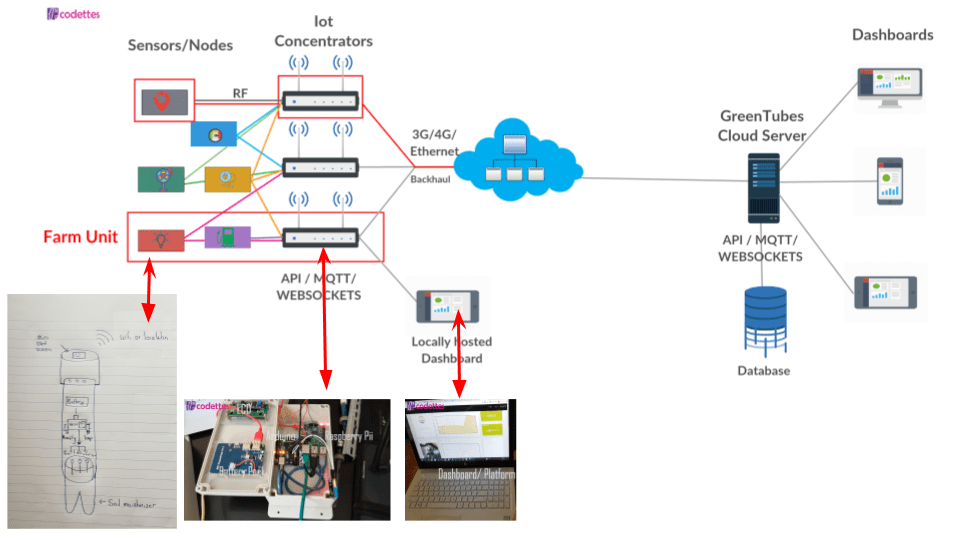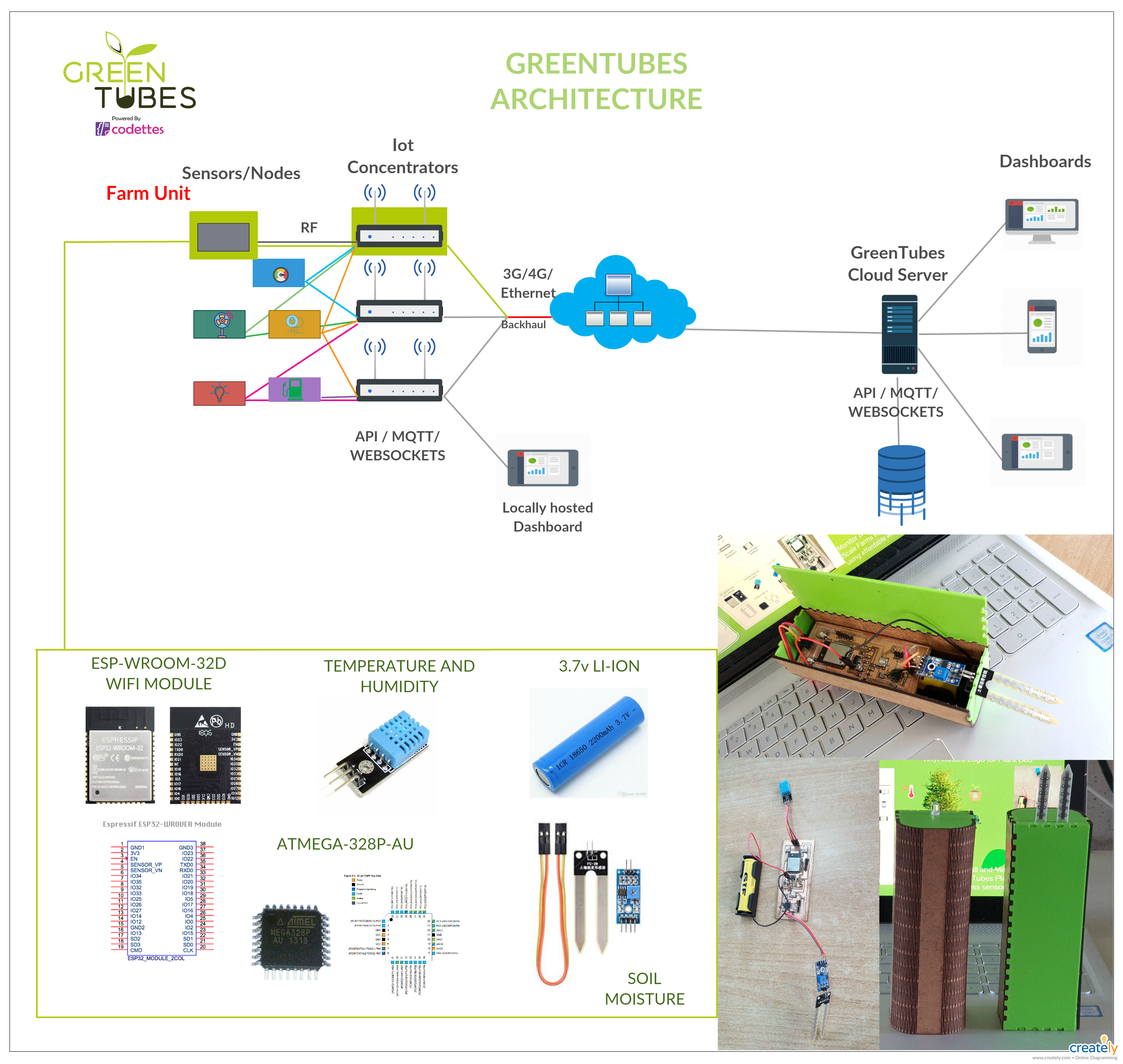Background
Initial Design

I am currently working with a team from Codettes foundation( which is an initiative I started about a year now to inspire educate and bring awareness to girls in innovation and ict http://www.codettes.org/) to upscale a previous IOT for Agriculture Solution which we had developed in the Kosmos/IT-Core HackOmation 2018 in Paramaribo Suriname. My team had built a fixed iot solution for monitoring and controlling a small scale farm at the Local Kosmos/IT-Core HackOmation 2018 in Paramaribo Suriname but then we encountered the problem of what is going to happen if someone wants to use that same system to monitor and control a medium or large scale farm how were they going to do that.
My team and I then designed a open layered architecture where instead of having our sensors directly connected to our mcu and directly connected to our gateway which we were using an raspberry pi 3 with loraWan we were going to make these sensors wireless eliminating the wires and make them communicate over some sort of communication layer (which we in the end decided to use lorawan for covering wider range when sensing on a large scale farm or wifi for small and medium scale farms) and then the data is monitored and controlled centralized via a mobile or web dashboard. By having these sensors modular and wireless and having them communicate to a centralized platform we can solve the problem of covering small medium and large scale farm with the same iot solution.We were no longer fixed to cables or having to run long cables all the way to the back of a farm to do simple sensing or controlling.
Initial Architecture

Final Architecture

Who will use it?
What will it look like?
What does it do?
Weeks Worked on Final Project
Bill of Material
Bill of Materials 2 Sensor Nodes
Presentation Slide and Video

Download Files Here
Final Project Link hereelectronics pcb kicad design files
sensor node 1 and 2 and gateway code files
2d laser cutting files sensor node enclosure
3d printed files sensor node enclosure
plant bed 2d / sbp files /cam
vinyl cut images and fcm files
Licencs Selected

This work is licensed under a Creative Commons Attribution-ShareAlike 4.0 International License.